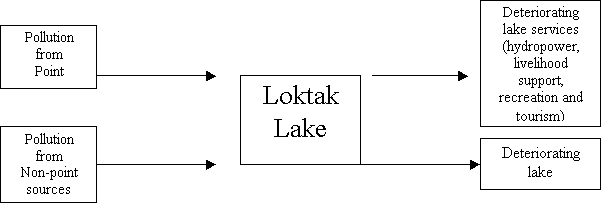
| Previous Session | Paper1 | Paper 2 | Paper3 | Paper 4| Paper 5 | Paper 6 | Next Session |
SESSION-2: Watershed Hydrology / Pollution
PAPER-5: Management of non-point Inorganic and Organic Pollution of Water Bodies using Decentralised Installation of Bioreactors -
Vinutha Devi, Chanakya H.N., de Alwis AAP, Deepa G.B. and Modak J.
CONTENTS-
Abstract
Introduction
Loktak Lake as a Case Study for Interventions
Objectives
Material and Methods
Results and Discussions
Conclusions and Recommandations
References
| Abstract | up | previous | next | last |
Loktak lake, at Manipur, which is 300 km 2 in area, is under stress due to human encroachment, deforestation, raw sewage disposal, agricultural runoff, and siltation. Due to these, many services to the community as well as the lake quality have deteriorated. About 70% of the lake is covered with a floating heterogeneous mass of vegetation, organic debris and soil locally known as Phumdis. These Phumdis are at various stages of decomposition and occur in various sizes and thickness. There has been a growing concern to protect and save this natural resource by the people of Manipur. There is a need to minimize or totally eliminate the organic load that enters the lake in the form of non-point and point source pollutants. The paper discusses a lake restoration plan based on decentralised bioreactor systems. Harvested floating aquatic biomass can be utilized for conversion to fuel and compost in plug flow bioreactors. Plug flow bioreactors, which are suitable for plant biomass, established in a modular manner around the lake perimeter, nutrient harvest could be made into a sustainable practice. Laboratory studies have shown that the key species of phumdis have the right TS and VS ratio of 80-95% and the potential to produce biogas. In addition to removal of plant nutrients, bioreactors can also be used to treat sewage. Bioreactors established in a decentralised manner can treat sewage and arrest organic matter flow into the lakes.
| Introduction | up | previous | next | last |
The growing size of human habitation around natural water bodies has gradually become a source of alarm. With the gradual increase in population and settlements bordering small and large water bodies, the extent of non-point source water pollution has been on the increase. Organic pollution loads arise from direct discharge of sewage, sullage and domestic solid wastes into the water bodies. In addition, modern agricultural practices involving the extensive use of synthetic fertilisers have played a major role in increasing the inorganic pollution of these water bodies. It is now well known that nearly 70% of the applied inorganic fertilisers, mainly soluble forms of nitrogen are leached or run-off from typical flooded paddy growing areas into nearby water bodies. In a few water bodies nearer denuded hill slopes, even silt enters the water causing further problems.
Pollution and Ecology of Water Bodies
The response of various water bodies to this form of organic and inorganic pollution varies significantly. While a few water bodies exhibit algal blooms in response to receiving high levels of inorganic and organic nutrients, many others suffer eutrophication. The nature and magnitude depend on the type and quality of nutrients received as well as the climatic and geographical factors. While Sharma and Kaur (1998) reported an increase in the algal species (bloom) in Dal and Nagin lakes of Kashmir, an increased growth of water hyacinth and Salvinia is characteristic of the back waters of Kerala. Enhanced growth of water hyacinth in response to sewage contamination has been found in Hebbal lake, Bangalore. A rapid increase of Ipomea in canals of the Kaveri and water hyacinth in the case of canals of the Godavari delta has been observed. Agricultural runoff bearing high inorganic plant nutrients is considered to be the main cause. Further east, in Manipur, the Loktak lake of Imphal suffers point and non-point source discharge of sewage from towns and villages on its shore. In addition to this, silt from nearby hill slopes reduce transmissivity of the water. Inorganic pollutants - nitrates and phosphates from agricultural land compounds the problem. In the case of Loktak lake, response to the increased plant nutrition in the water, is accompanied by an increase in the extent of floating water weed colonies called Phumdis.
Most of the tanks and lakes in Bangalore are also polluted due to the rapid growth, urbanisation and industrialisation. Records show that till 1960, there were around 262 water bodies in Bangalore (Subramanian, 1984). Today the number has decreased to 81 and of these only 34 are recognised to be live lakes. In recent years, conservation and protection of natural resources has become a priority. The state and central governments are working on the restoration of lakes (INEP, 2001). In one such experiment, a few lakes such as Hebbal and Madivala lakes in Bangalore have been desilted and protected from further pollution and resultant eutrophication.
A similar situation exists in the case of Loktak lake, Imphal. This is the largest fresh water wetland in Manipur and plays an important role in the ecological and economic security of the region. The people of Manipur are culturally, socially and economically linked with the Loktak and hence the lake has been referred to as the lifeline of Manipur (Trisal and Manihar, 2002). This lake is under pressure due to human encroachments in the catchment area, deforestation, over exploitation of the resources and siltation. There is an urgent need to restore Loktak lake from extinction (Figure 1). A growing concern to safeguard the natural resources has awakened the people to find a permanent solution for the protection of Loktak lake in Manipur.

Figure 1. Current situation of Loktak Lake with regards to inputs and impact
Strategies to Combat Pollution
From these examples it is clear that on one hand there is a need to minimise or totally eliminate the organic loads and inorganic pollutants that enter the water body inadvertently through run-off are subsequently converted to plant biomass that needs to be harvested regularly on the basis of their growth rates. This is expected to prevent death and decay of plant material within the water body. Such a harvesting of plant biomass from the lake will ensure that the dissolved plant nutrients are constantly removed from the water body and maintained at a desired level. This form of lake management requires that
• the harvested plant biomass provide value added products in order to ensure that the process of harvesting of plant biomass is sustainable;
• harvested biomass is converted to fuel to obviate the need for fuel wood and resultant denudation of hill slopes;
• digested plant biomass harvested is returned back to land as organic rich compost in order to provide plant nutrients in its richest form to land cultivated on the edges of lake - land whose run-off enters the lake.
In this strategy or scheme of things, two important interventions would be to
• arrest non-point source entry of human waste into the lake through suitable technologies, especially organic matter.
• utilise harvested plant biomass (in the form of floating aquatic plants) for conversion to fuel and compost in plug flow bioreactors.
| Loktak Lakes as a Case Study for Interventions | up | previous | next | last |
In order to substantiate the above hypothesis /strategy, its applicability to the Loktak lake is examined. The Loktak lake is situated in Bishnupur district and is the largest freshwater lake in the North East India covering an area of 300 sq km. This lake is the major source of domestic water and in addition serves the needs such as fishing, medicinal garden, fodder, fuel, etc. It also acts as a reservoir for the generation of hydro electric power. There are about 63 settlements (villages and towns) on the shore all around this lake. Most of the sewage, solid waste leachates, sullages, agricultural run-off from these settlements enter the lake. This lake is now threatened due to gradual eutrophication and human encroachments for paddy cultivation and fish farming. Some of the major causes for pollution of water and the degradation of lakes are
• disposal of domestic garbage,
• leaching of chemical fertilisers from agricultural and pisciculture activities,
• encroachments for paddy cultivation,
• draining of insecticides, pesticides and the weedicides from the neighbouring crop lands
• misuse of the toxic chemicals for catching fishes (Sharma, 2001).
Loss of Open Water Surface and Aquatic Vegetative Mass
About 70% of the water surface is now covered by floating vegetation (Phumdi) in Loktak lake. Setting aside about 200 km 2 area for reserved parks, regrowth, etc., plant material from about 100 km 2 is currently available for harvest annually. Reports of studies carried out nearby for water hyacinth (Srivastava, et .al., 1984) suggest a biomass productivity of about 20t DM/ha/yr (wet mass 200t). At these levels of productivity the annual biomass production is estimated to be about 2 million tons per annum on wet basis. This annual increment of biomass could be distributed 1:1 in shoot and roots amounting to about 1 million tonnes of green Phumdis which become available for conversion to biogas. It must be noted that for every kg of plant material harvested an equal quantity of silt collected and trapped in the roots is also removed thereby overcoming yet another threat namely, siltation.
The success of this strategy of decentralised harvest of biomass for gaseous fuel then depends upon the capability of conversion of these aquatic plants /phumdi to biogas and compost. In addition it is also envisaged that sewage could be simultaneously treated in village level bioreactors using harvested plant biomass as bacterial support. In this way organic loads are prevented from entering the lake. Also, the inorganic plant nutrients entering the lake are harvested and removed as phumdi based biogas and compost. When the compost generated in this process is recycled onto paddy and run-off intensive crop lands the cycle is complete and the run-off nutrients are returned to their land of origin.
Important Aquatic Biomass Species
The aquatic vegetation is varied, covered with water weeds namely, Echinochloa stagnina, Eicchornia crasssipes, Zizania latifolia, Cyperus brevifolius, Brachiaria mutica, Hedychium coronarium, Salvinia natans, Capillepedium Spp, Phragmites karka etc. Proliferation of the soil, vegetation and organic debris at various stages of decomposition forms a floating island locally called as Phumdi. These Phumdis occur in all sizes and thickness. Altogether 138 species of plants representing 88 genera are found distributed in the Phumdi and non-Phumdi regions (clear water zones) in the lake. Salvinia natans is a dominant colonising species, which damages the aquatic ecosystem by its rapid growth and displacement of native plants that provide food and habitat for the native animals and waterfowl.
Socio-economic Impact
Proliferation and change in the character of these Phumdis have led to the problems of water quality deterioration, decline in fish production, reduction in water storage capacity, loss of open water area, blockage of channels and retardation of natural water-flow, disturbances in navigation and overall health of the lake has been seriously effected (Santosh and Bidan, 2002). People around the lake depend upon the lake for fish, medicinal plants, fuel and fodder. With the change in quality, the capability of the lake to provide people with all these has fallen.
| Objectives | up | previous | next | last |
To demonstrate that decentralised removal of Phumdi biomass for generating biogas fuel and also providing domestic and street lighting, would be an ideal method to maintain the Phumdi population and mass at an appropriate level. In addition, we also suggest the use of bioreactors to treat sewage before discharging into the lake.
| Material and Methods | up | previous | next | last |
This ongoing study has two components - one of feasibility and second of laboratory estimations. Estimation of feasibility of removal of Phumdis, decentralized harvest, need for gaseous fuel, growth and harvest potential etc. were obtained from literature as well as from field visits and personal discussions.
Nine dominant species of Phumdi vegetation (shoot portions) have been subject to detailed studies. Parameters necessary to determine the biogas production potential (also called biological methane potential, BMP) have been estimated. Physico-Chemical analyses of the weed biomass was carried out according Standard Methods (APHA, 1975, 1984). The total solids (TS), volatile solids (VS) were estimated according to the following procedures.
BMP Procedure
One and 2% dried plant matter of each of the study species in triplicates were placed in dry 132 ml vials. They were filled with 49.5 or 49ml inoculum. These vials were rapidly flushed first with biogas immediately to remove traces of oxygen, capped with rubber stoppers and crimp-sealed. Subsequently all the vials were flushed with O 2 -free nitrogen for 120 seconds at a flow rate of 100 ml/min. to lower the methane content in the head space gas. The gas composition was analysed immediately. These vials were then incubated upside down at 35 0 C for 150 days. The methane content of the head space gas was determined by gas chromatography and the net methane produced during the preceding interval was determined by difference.
The potential methanogenic rates on residual bacterial support material ware determined in the presence of unlimited methanogenic substrates but (CO 2 +H 2 or sodium acetate) without pH control. The methanogens attached to the biomass (bacterial support) was measured by determining their capability to transform these two substrates in a period of 4h and 8h respectively. Digested biomass feedstocks were introduced to 132ml glass vials and subjected to the BMP procedure as indicated above. In place of 49ml inoculum only 5ml inoculum from the source was used to keep the biomass material constantly wet. These methanogenic rates were obtained as ml CH 4 /g support/hr. These values were later converted to ml biogas /g biomass support /day (assuming a biogas composition of 60% CH4 and 40% CO2.
| Results and Discussions | up | previous | next | last |
Phumdi Characteristics and Harvest
The spread and cover of the Phumdis (aquatic plants) on Loktak lake is presented in Figure 2. The size of the phumdis varies significantly with its age. Phumdis formed for a period of less than 2-3 years have small root system <0.75m and a shoot system reaching upto 1.5m depending upon the species colonised. These types of Phumdis are harvested by men and women who use boats on a daily basis to fetch water, wash vessels or take bath.
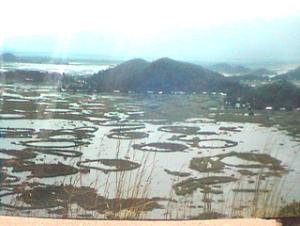
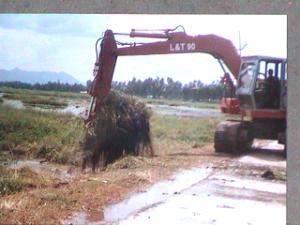
Figure 2. Phumdis on Loktak lake Figure 3. Mechanical harvest of Phumdis
Older Phumdis have a deeper root system and collect much larger quantities of silt and the shoot system are much more dense and taller. These are expected to be removed by mechanical means (Figure 3). On the other hand there exists pockets of very old Phumdis. These are characterised by very deep root systems (up to 2.5m) as well as a heavy load of silt. It is envisaged that when Phumdis are harvested for biomass, energy, compost, etc. on a regular basis
Phumdi Profile
As mentioned in the introduction, Phumdis are a matted mass of floating aquatic and secondary colonised plants that form aggregated floating islands of varying sizes. For the purpose of finding uses for Phumdis we classify them in to aerial portions (green shoots) and submerged portions (roots, detritus, peat and silt).
Table 1. TS, VS and mineral matter in major plant species of the Phumdis.
| Species | TS (%) | VS (%) | Ash (%) |
| Bracharia mutica | 91.1 | 90.41 | 9.58 |
| Capillipedium spp | 94.8 | 83.02 | 16.97 |
| Cyperus brevifolius | 31.9 | 85.71 | 14.28 |
| Echinochloa stagnina | 91.75 | 83.82 | 16.17 |
| Eichhornia crassipes | 87.4 | 89.19 | 10.8 |
| Hedychium coranarium | 73.55 | 75.52 | 24.47 |
| Phragmites karka | 88.27 | 93.55 | 6.44 |
| Salvinia natans | 89.51 | 88.55 | 11.44 |
| Zizania latifolia | 89.88 | 92.3 | 7.69 |
Composition of Shoots
As mentioned earlier there are about 138 plant species in Phumdis. Table 1 presents the composition of such a biomass species with respect to their suitability for conversion to biogas. In all the 9 species studied the TS and VS ratios are high ranging from 80 - 95%. The high organic matter suggests a good potential for conversion to biogas. However, it is also important to determine other fermentation characteristics such as ultimate biological methane potential (BMP), methanogen colonisation, etc.
Composition of Submerged Phumdi
The submerged portions of the root and decayed debris become gradually matted and collect a large quantity of silt from the water body. In addition as water level falls, the lower portions of the roots touch the lake bottom and anchor into the soil /silt layer below. Once again when water levels rise in flood the plants along with their roots and silt begin to float.
Table 2. Composition of submerged root portions of Phumdis.
| Type of Phumdi | TS% | VS% | Ash% |
| 1. Young Phumdi (just below water surface) | 13.5 | 67.8 | 32.2 |
| 2. Young-mid Phumdi (sampled at 30cm depth from surface) | 36.9 | 40.8 | 59.2 |
| 3. Moderately old (Sampled at 30cm depth from surface) | 69.6 | 27.9 | 72.1 |
From the table 2, it is clear that with older Phumdi roots there is a much greater likelihood of clay and silt particles being harvested along with the roots. This provides two advantages namely removal of silt from the lake and second improving the nutrient quality of the compost being made from this fraction. However, considering the high organic matter content there is also a possibility of converting this into building materials and thus requires further research.
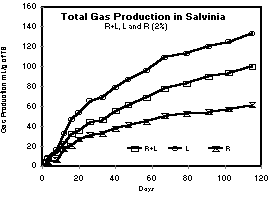
Figure 4. Gas production pattern from Salvinia natans in laboratory studies

Figure 5. Decentralized option for sewage management
Biogas Production
Harvested shoots of the Phumdi plants make good material for biogas production. Water hyacinth has been reported to produce biogas in the range of 250-340 m 3 /t dry matter (Chanakya et al, 1993). Similarly many grass and herbaceous species produce very large quantities of biogas (Chanakya et al, 1999). Salvinia natans has not been adequately tested for biogas production and hence is reported here. It is anticipated that there will be many methods of harvesting biomass. Salvinia is expected to require more complex technology due to its high moisture content. Figure 4 shows biogas production at levels similar to that of cattle dung. Laboratory experience suggests that even at concentrations in the range of 2-4% TS the resultant viscosity of the mass is quite high. Plugflow bioreactors are therefore most suitable compared to CSTR type reactors. However, when a combination of other species of plants are used it is expected that biogas production levels will be close to that found for other herbaceous biomass namely 350m 3 /t dry matter.
From the data collected in the field and earlier estimates of biogas production from coffee waste water, etc. at ASTRA, a scheme for recovery of energy and nutrients from floating Phumdis is proposed. It is also proposed that water from individual toilets be channelised to flow through a simple bioreactor in each of the villages. From this it is estimated that biogas could be supplied to all families on the shore of the lake (100,000 persons). Figure 5 is a recommendation for upstream of the lake. Bioreactors established in a decentralised manner can improve the untreated sewage flow into the lake and thus reduce the organic loading into the lake. Figure 6 considers biomass harvesting from the lake and utilisation. Harvested biomass should be separated into roots and plant leaves and the two streams handled separately. Leaves could be digested in a plug flow bioreactor to generate biogas. The biogas can be used for its thermal energy content or if the generation is sufficient could be used in generating electrical energy for meeting energy requirements of lighting and water supply needs. The roots after some solar drying could be utilised in dryers to support the local fish drying. The silt /clay in the roots could be used in making several forms of building materials like bricks, roofing tiles etc.
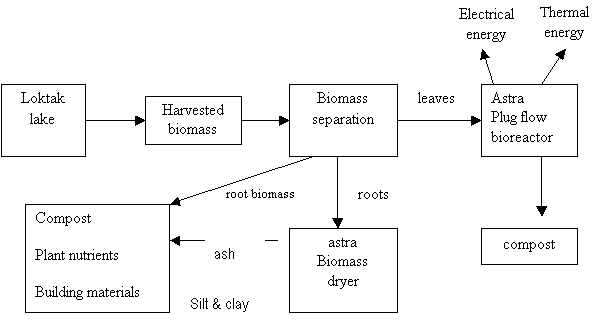
Figure 6. Proposed scheme for management of Phumdi biomass
| Conclusions and Recommendations | up | previous | next | last |
CONCLUSIONS AND RECOMMENDATIONS
It is seen that the plant matter from the lake can be utilised to generate biogas and basic generation potential data has been developed. With plug flow bioreactors, which are especially suited for biomass, when established in a modular manner around the lake perimeter at planned locations (as elucidated in this paper) could be developed into a sustainable practice.
| References | up | previous | next | last |
Chanakya HN, Borgaonkar S, Meena G and Jagadish KS. (1993). Solid phase biogas production with Garbage or Water hyacinth. Biores. Technol. 46:227-231.
Chanakya HN, Srikumar KG, Anand V, Modak J and Jagadish KS. (1999). Fermentation properties of agro-residues, leaf biomass and urban market garbage in a solid phase biogas fermenter. Biomass and Bioenergy 16:417-429.
INEP (2001). Restoring a lost heritage. Integrated development of Madivala and Hebbal lakes project, Government of Karnataka.
Santosh, S and Bidan, C. (2002). Distribution of aquatic vegetation in Loktak lake in Proc. of Management of Phumdis in Loktak lake. Manipur, India.
Sharma, BK. and Kaur, H. (1998). Environmental chemistry. Goel Publishing Meerut. 4th edition.24-66.
Sharma, M. (2001). Impact of environmental upheavals in Manipur in http://www.manipuronline.com/features/envirnoment.htm (as on 16-11-2002).
Srivastava, RC., Pillai, KR., Singh, HD., and Raghavan, KV. (1984). Studies in design of anaerobic digester for water hyacinth. Proc. III Int. Conf. Wat. Hyacinth, RRL, Hyderabad, India. 566-592.
Subramanian., D.K. (1984). Bangalore Water supply - A study and analysis. Technical Report. KSCST. IISc. Bangalore 560 012.
Trisal, C.L. and Manihar, T.H., (2002). Management of Phumdis in the Loktak lake. in Proc. of Management of Phumdis in Loktak lake. Manipur, India.
| Address: | up | previous |
Centre for Sustainable Technologies (ASTRA),
Indian Institute of Science,
Bangalore 560 012,
Karnataka. India.